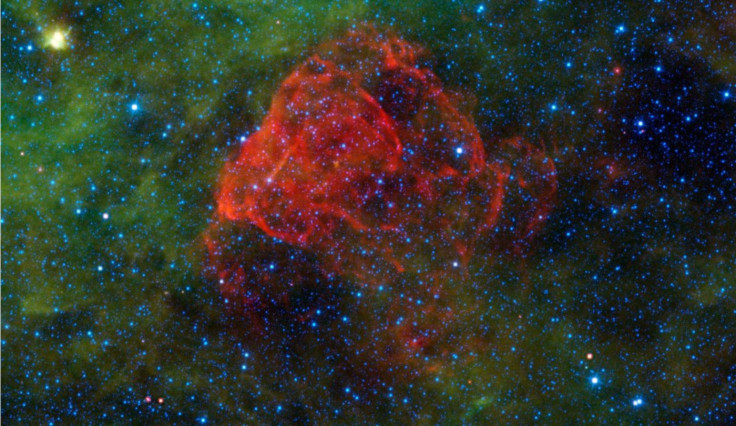Superluminous Supernova Brighter Than Milky Way Detected 10 Billion Light-Years Away

A massive star 10 billion light-years from Earth exploded in a supernova and its brightness was more than three times that of all the 100 billion stars of the Milky Way galaxy put together. Detailed results of an investigation into the superluminous supernova were published Friday in the journal Monthly Notices of the Royal Astronomical Society.
Superluminous supernova are about 10 to 100 times brighter than their ordinary counterparts, and scientists are still not sure about the kinds of stars that are involved or of the physical processes that lead to this extreme brightness. And this particular superluminous supernova, called DES15E2mlf, is unusual even among its own kind, very few of which have been detected so far by astronomers.
Read: Brightest Supernova Event Was Actually A Black Hole Swallowing A Passing Star
First spotted by the Dark Energy Survey (DES) collaboration using the Blanco 4-meter telescope at Cerro Tololo Inter-American Observatory, Chile, in November 2015, DES15E2mlf is located in a fairly regular-looking massive galaxy. However, superluminous supernovae are typically found to reside in dwarf galaxies or other low-mass galaxies.
“The current idea is that a low-metal environment is important in creating superluminous supernovae, and that’s why they tend to occur in low mass galaxies, but DES15E2mlf is in a relatively massive galaxy compared to the typical host galaxy for superluminous supernovae,” Yen-Chen Pan, a postdoctoral researcher at University of California Santa Cruz and first author of the paper, said in a statement on the university’s website.

After the initial detection, follow-up observations of the supernova were made with the Gemini Multi-Object Spectrograph on the 8-meter Gemini South telescope, also in Chile, to measure the object’s distance and detailed spectra. Supernova explosions enrich the interstellar medium with heavier elements, which in turn helps the formation of stars with elements heavier than helium (the second element in the periodic table, everything above which is referred to as a “metal” by astronomers, like in Pan’s comment). Therefore, studying supernovae is useful in understanding the evolution of galaxies.
“It’s important simply to know that very massive stars were exploding at that time. What we really want to know is the relative rate of superluminous supernovae to normal supernovae, but we can’t yet make that comparison because normal supernovae are too faint to see at that distance. So we don’t know if this atypical supernova is telling us something special about that time 10 billion years ago,” Ryan Foley, an assistant professor of astronomy and astrophysics at the university and another lead author of the paper, said in the statement.
Read: Possible Remains Of Supernova Survivor Spotted By Hubble
When stars die, those with fewer heavy elements retain a bigger portion of their mass, leading to a more spectacular explosion when the fuel supply is exhausted and the stars collapse, Foley explained in the statement. He suggested even the Milky Way could have had, in the distant past, conditions to produce a lot of superluminous supernovae.
Mat Smith, a postdoctoral researcher at University of Southampton and one of the paper’s co-authors, said in the statement: “Although many puzzles remain, the ability to observe these unusual supernovae at such great distances provides valuable information about the most massive stars and about an important period in the evolution of galaxies.”
© Copyright IBTimes 2025. All rights reserved.





















